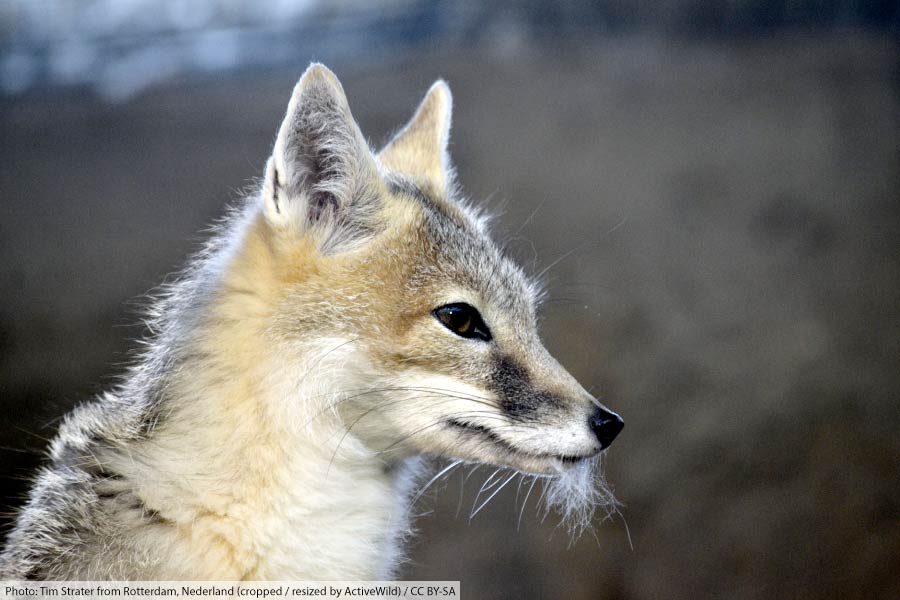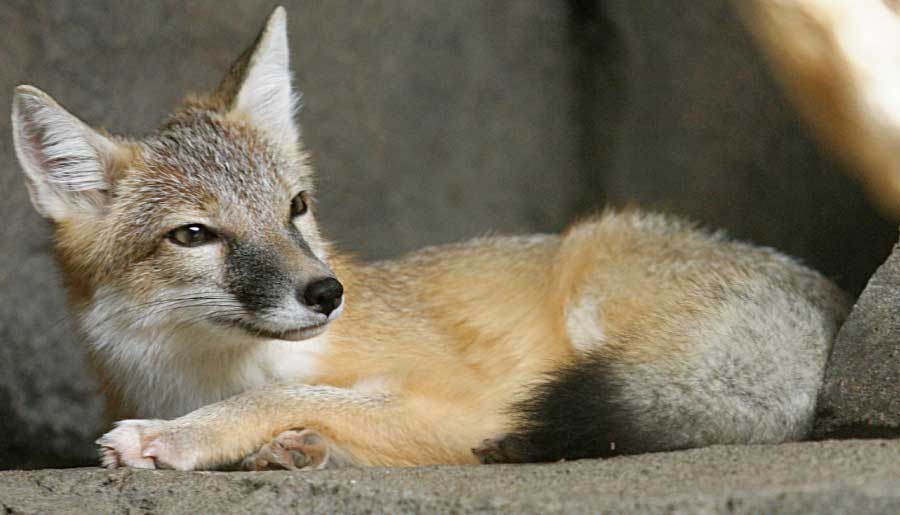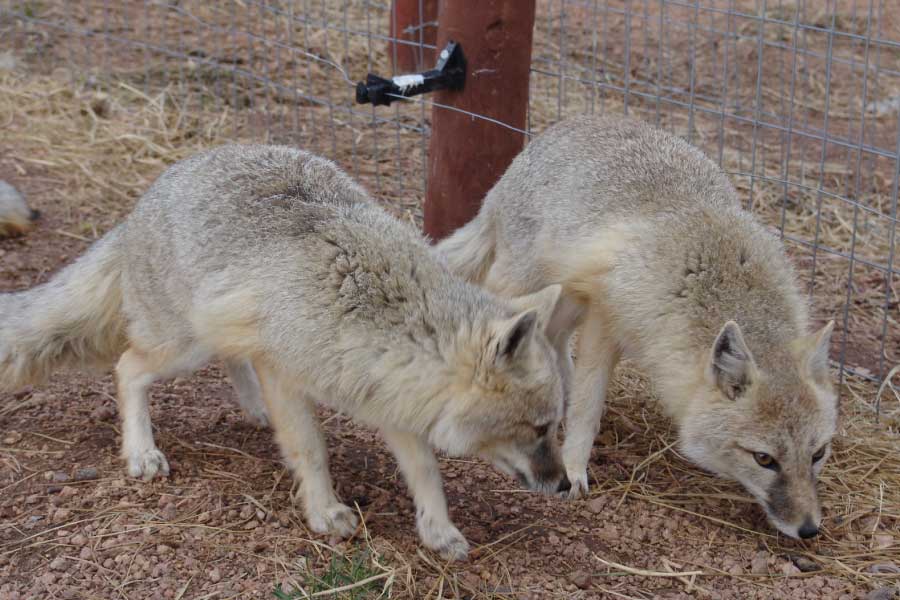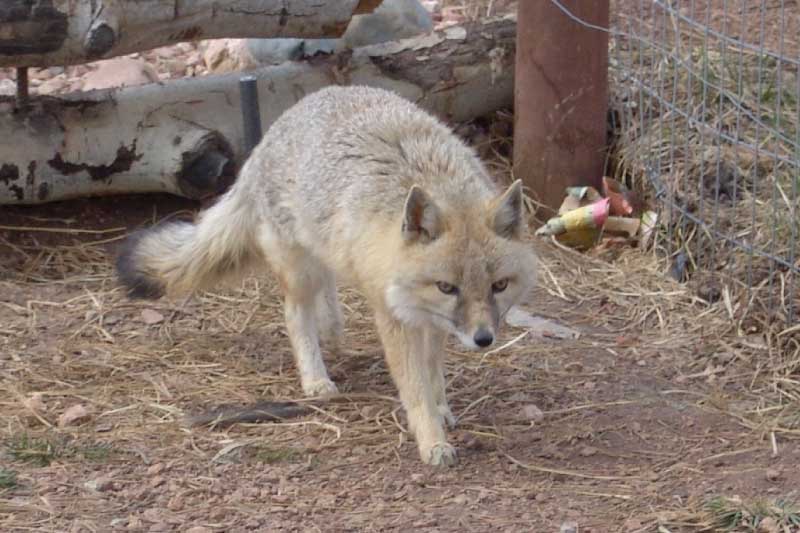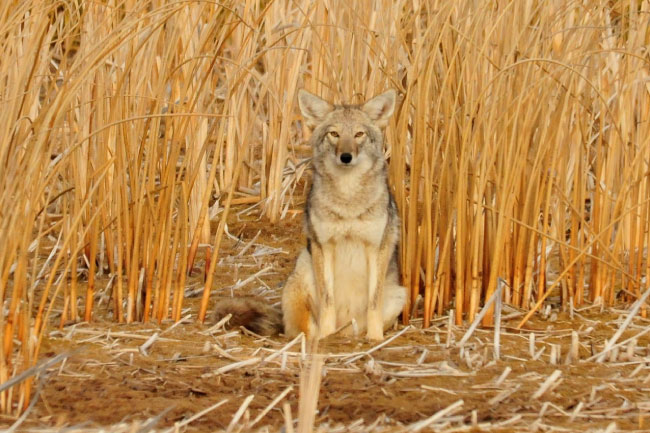What Is A Swift Fox?
The swift fox is a small fox found in North America. It inhabits grassland habitats in the Great Plains region. A member of the ‘true fox’ genus Vulpes, the swift fox is closely related to the kit fox with which it shares the southern parts of its range.
Page Index
- Swift Fox Video
- What Is A Swift Fox?
- Swift Fox Facts At A Glance
- Other Interesting Swift Fox Facts
- How To Recognize A Swift Fox
- Where Is The Swift Fox Found?
- Swift Fox Habitat
- Swift Fox Facts: Family & Related Animals
- Swift Fox Facts: Lifestyle
- Swift Fox Diet & Hunting
- Swift Fox Predators
- Swift Fox Life Cycle
- Is The Swift Fox Endangered?
- Further Reading
Swift Fox Video
You can watch footage of a swift fox being re-introduced to its natural habitat in the video below:
Swift Fox Facts At A Glance
- Scientific name: Vulpes velox
- Type of Animal: Mammal
- Animal Family: Canidae (The dog family)
- Where Found: Great Plains Region, North America
- Combined Body / Tail Length: 79 cm (31 in)
- Weight: between 2.27 and 3.12 kg (5 and 7 lb.)
- Conservation Status: Least Concern
Other Interesting Swift Fox Facts
- The swift fox and the closely-related kit fox are the joint-smallest wild dog species of North America.
- The swift fox lives up to its name, being able to run at speeds of over 50 km/h (31 mph).
- Many swift foxes mate for life; those that don’t stay with their partners for the whole breeding season.
- The swift fox was hunted to extinction in Canada. Swift foxes found in the country today are a result of re-introduction and conservation projects, which are considered some of the most successful of their type.
- Some biologists consider the swift fox and the kit fox to be the same species. Swift fox / kit fox hybrids are known to occur in areas in which both species are present.
How To Recognize A Swift Fox
The swift fox is a small wild dog with the typically bushy tail and pointed ears of a member of the ‘true fox’ genus Vulpes.
The fox’s coat is gray on the back and tail, orange-yellow on the sides and legs, and creamy white on the chest and undersides. There are dark patches either side of the nose.
The bushy tail has a black tip but does not have the distinct black stripe running along its length seen in the gray fox.
The swift fox is a similar size to the kit fox, to which it is closely related. The swift and kit foxes are the smallest wild dogs in North America. Both are a similar size to a house cat. Male swift foxes are slightly larger than females.
The swift fox can be identified by its small size, large ears and the grassland habitat in which it is found. It is smaller than both the gray fox and the red fox (significantly so in the case of the red fox).
Where Is The Swift Fox Found?
The range of the swift fox is centered around the Great Plains region of the North American interior.
The swift fox is abundant in Colorado, Kansas, and Wyoming, and in parts of Texas, New Mexico, and Oklahoma. The species is also present in Montana, Nebraska, and South Dakota.
In Canada, the swift fox is found in southern Alberta and Saskatchewan.
The species was heavily hunted in the past. Although the swift fox is today considered non-threatened, it inhabits only around 40% of its original range.
Swift Fox Habitat
The swift fox inhabits shortgrass prairie and mixed-grass prairie habitats. The species will also inhabit unused crop fields.
Dense vegetation and taller shrubs may hinder the small fox’s ability to look out for predators.
Areas with loamy soils (soil composed mainly of sand and silt) are preferred by the swift fox, as they provide favorable conditions for burrowing and den building.
Much of the swift fox’s natural habitat is semi-arid. As an adaptation for living in this habitat the swift fox is able to survive without a ready source of water; it obtains all the water it needs from its prey.
- Shortgrass prairie is a wide, open habitat in which grasses such as blue grama (Bouteloua gracilis) and buffalograss (Bouteloua dactyloides) are the dominant plants.
- Mixed-grass prairie is a transitional region between the shortgrass prairie of the Great Plains region and the tallgrass prairie that lies to its east.
Swift Fox Facts: Family & Related Animals
The swift fox is a canid (a member of the dog family, Canidae). It is a member of the genus Vulpes, alongside other canids such as the Arctic fox, kit fox, red fox and fennec fox. Members of this genus are known as ‘true foxes’.
- You can see pictures and facts on EVERY member of the dog family on this page: Wild Dogs List with Pictures and Facts
Canidae is one of several animal families in the order Carnivora. This group also contains families such as the cat family (Felidae) and the bear family (Ursidae).
- You can find out more about animal groups such as families and orders on this page: Animal Classification
- You can find out more about the different types of mammals (including Carnivora) on this page: Types of Mammals
Swift Fox Facts: Lifestyle
Like most foxes, the swift fox is nocturnal and rarely seen outside of its den during the day. The only exception to this is during the winter, when the fox may be seen resting near its burrow in the middle of the day when temperatures are at their warmest.
The swift fox lives in pairs, either mating for life, or staying with the same partner for a year.
The swift fox’s den consists of a burrow two to four meters in length with an entrance 7 to 9 in. in diameter. The entrance may either be circular or a key-hole shape (a kit fox burrow also has a key-hole-shaped entrance). The burrow’s small entrance allows it to be used as a means of escaping from predators.
Dens used for resting or predator evasion tend to have a single entrance, while those used for raising pups often have multiple entrances.
A swift fox will either dig its own burrow, or convert the deserted burrows of animals such as American badgers and prairie dogs.
Swift foxes are known to use up to thirteen dens in a year. Reasons for changing den include prey scarcity and the build-up of parasites within a den.
The swift fox is able to run at speeds of over 50 km/h (31 mph). This allows the fox both to evade predators and to capture prey.
Swift Fox Diet & Hunting
Like most canids, the swift fox is an omnivore. Its diet consists mainly of meat but is supplemented by plant matter such as grasses and fruit.
The swift fox is an opportunistic hunter and forager, and will eat a wide variety of prey animals.
Its diet includes rodents such as prairie dogs, ground squirrels and mice, together with jackrabbits and cottontails and other mammals. The fox will also eat reptiles, amphibians, fish, birds and insects.
As well as capturing its own prey, the swift fox will also feed on carrion.
Swift Fox Predators
The main predator of the swift fox is the coyote. Coyotes will often kill swift foxes without eating them as a means of limiting competition for resources.
Other known predators of the swift fox include the American badger, golden eagle, horned owl and bobcat.
The swift fox is usually out-competed by the red fox in areas where both species are present.
Swift Fox Life Cycle
Towards the northern parts of the species’ range, the swift fox’s breeding season begins in February and March, with pups being born in April and May. In the southern United States, breeding begins as early as late December with pups being born in March.
The species’ gestation period ranges from 50 to 60 days. Litters range in size from 2 to 6 pups, with the average litter size being 4.5 pups.
Swift fox pups are born blind and are completely dependent on their mother for the first few weeks of their lives. They are weaned at 6 to 7 weeks of age and will stay with their parents for around 6 months.
Males begin to breed after their first year, while females raise their first family after two years.
Is The Swift Fox Endangered?
The conservation status of the swift fox is currently ‘Least Concern’ and its population is thought to be stable.
Sadly, this has not always been the case. During the late 19th and early 20th centuries the swift fox was persecuted almost to extinction in many parts of its range.
Although the species wasn’t directly targeted, it fell victim to predator control schemes intended to reduce numbers of coyotes and gray wolves.
The swift fox was extirpated from several US states, including Oklahoma, Kansas, Montana and Nebraska, by the early 20th century. The swift fox was extirpated entirely from Canada by 1938.
Conservation schemes in the United States saw the species make a resurgence in many locations.
The swift fox was re-introduced in Canada in a scheme named the Canadian Swift Fox Reintroduction Programme, which ran from 1972 to 1997. (Source)
The scheme saw 932 swift foxes, 841 of which had been raised in captivity specifically for the project, being released in the Canadian Prairies between 1983 and 1997.
The scheme was a success, and today the swift fox is once again resident in Canada.
Despite these successes, the swift fox is only present in around 40% of its original range.
Swift Fox Facts: Discover More
- Find out about EVERY species of dog: Wild Dogs List with Pictures and Facts
- Find out about the closely-related kit fox: Kit Fox Facts
- Learn about mammals: Mammals: The Ultimate Guide
- Discover amazing animals from all around the world: A to Z Animals List with Pictures & Facts

